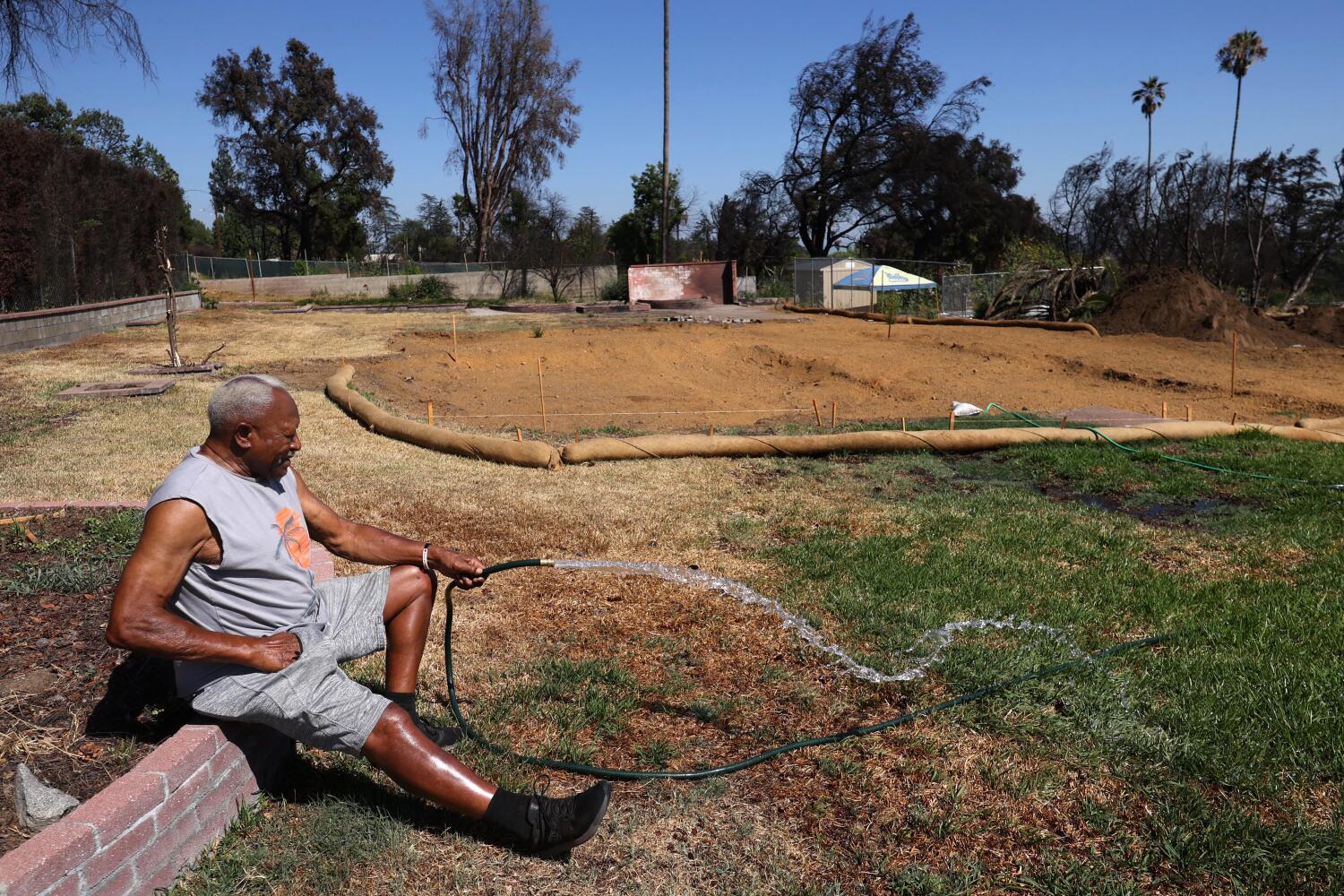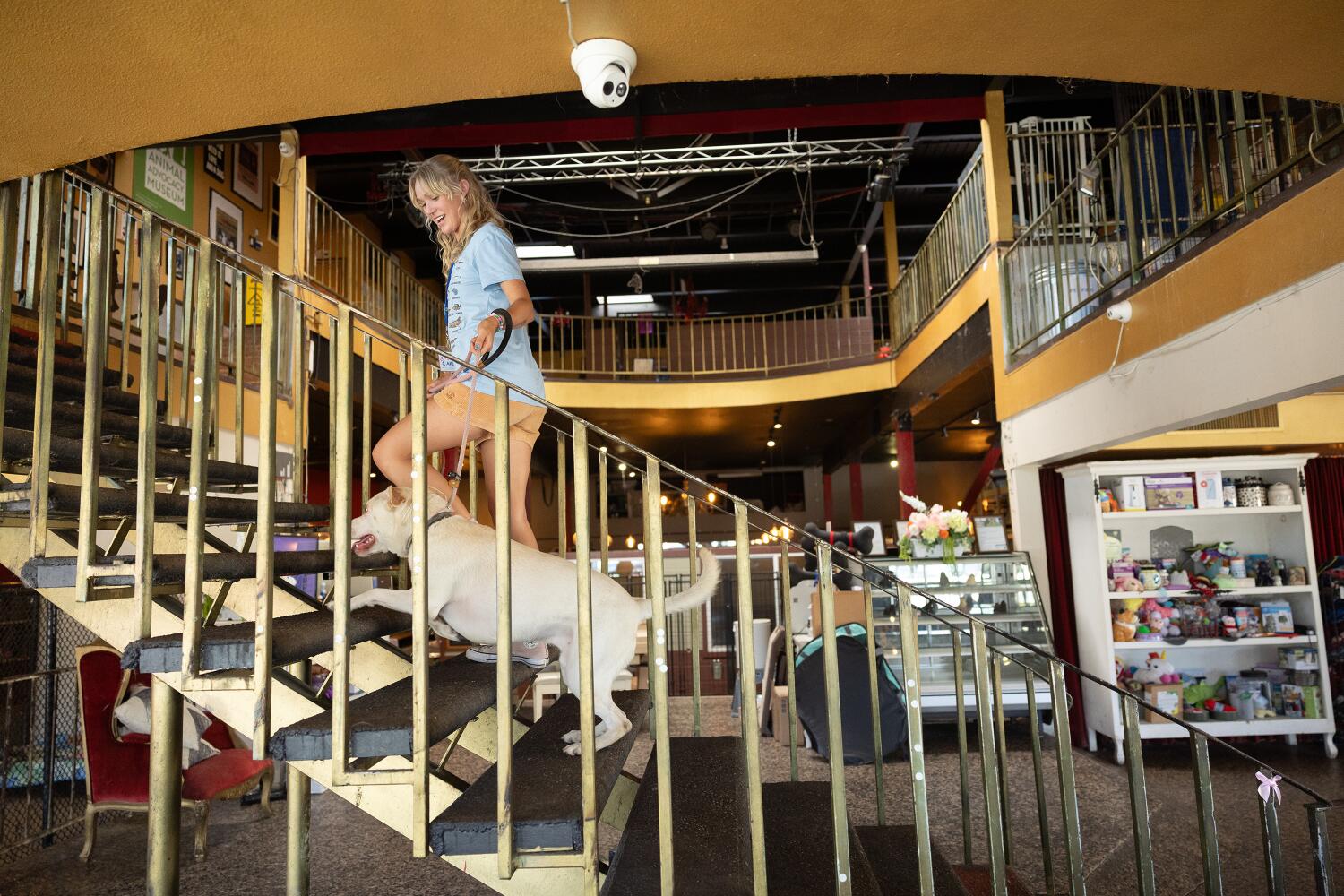| There are multi-talents, and then there was Salvador Bagüez. |
| Hollywood used him as a bit actor in 1950s B-movies and classic Western television series from "Death Valley Days" to "Bonanza" to "The Cisco Kid." Studio executives frequently hired the Mexican immigrant as a technical advisor or dialogue coach for movies set in Latin America or Spain involving stars such as Marlon Brando, Robert Mitchum and Cary Grant. |
| Bagüez's baritone took him to radio programs and stage shows alongside Jose Arias, a pioneering bandleader of Mexican and Californio music. In his later years, he covered the Dodgers as a sports writer for La Opinión. But for two decades, the longtime Lincoln Heights resident made his biggest mark in Southern California life — no pun intended — as a star illustrator for The Times from the mid-1920s until about World War II. |
| Not a bad career for one of the first Latinos to work at this paper, amiright? |
| I first heard about Bagüez in 2023 from Times editorial library director Cary Schneider, who had received a query from someone trying to find out more information about "Sal Baquez." He gave me a heads-up because one of the trillion sub-beats I have is trying to tell the stories of pioneering but forgotten Latinos at the paper. So far, I've profiled columnist Pepe Arciga, cartoonist Manuel M. Moreno and artist-turned-Commerce Councilmember Alex O. Perez. |
| |
| Now, here's Bagüez's story. |
Copy boy turned star |
| He was born in Juarez in 1904 and came to this country in 1921. Bagüez's first jobs for The Times were as a copy boy and a singer in the paper's monthly radio variety show on KHJ (and I thought appearing in our videos reels was intimidating). Singing classic and contemporary songs in English and Spanish, his voice was so stirring that an Aug. 12, 1926, Times story revealed that colleagues in the art department took up a collection to gift him singing lessons. |
| By then, Bagüez was establishing himself as an illustrator in the paper's pages. His main beats would become sports, entertainment and the Los Angeles Times Sunday Magazine. His style varied — Pee-Chee folder-style illustrations that spanned the length of the front page of the sports section, sketches in charcoal of Hollywood stars like Charlie Chaplin and Douglas Fairbanks, even Art Deco-style flights of geometric fancy. When World War II came, Bagüez drew caricatures of Hitler and Stalin and even maps of Axis advancements across Europe. He signed all of his illustrations with an umlaut over the U in his last name, a grammatical courtesy not offered to him by The Times typesetters, who went with "Baguez" in his byline. |
| When he wasn't drawing, Bagüez was interpreting for Times reporters and penning Spanish-language film and music reviews. His importance to the paper was such that he was listed as one of The Times' stars in a Dec. 3, 1928, ad in the Pasadena Post urging readers to subscribe to this paper — the only Latino staffer afforded the honor. |
 |
| A 1941 illustration of author Booth Tarkington drawn by Salvador Bagüez. (Los Angeles Times) |
| The last mention I could find of him as a Times employee came in the May 17, 1943, edition of "Lee's Side o' L.A.," in which longtime columnist Lee Shippey mocked people who expressed sympathy for pachucos, the Mexican American men who were increasingly being assaulted by white servicemen in a series of attacks that culminated in the Zoot Suit Riots just a few weeks later. Shippey cited Bagüez and fellow Times artist Perez as Mexicans done good, writing, "Both worked up to enviable reputations because they were thoroughly good men as well as good workmen ... gangsters go to jail, good citizens do well. Pick out the right examples, boys." |
| |
| I wonder if that tokenism is what La Opinión sports editor Rodolfo B. Garcia was referring to in a 1979 Bagüez appreciation when he said the artist left The Times at the height of his fame because he didn't like how a Times editor "called his attention." |
| One person who knew Bagüez well was Hall of Fame Dodgers broadcaster Jaime Jarrín. His first radio job, for KWKW in 1955, was as Bagüez's replacement after the latter quit the station for a movie gig. The two would dine before games at Dodger Stadium — "full meals, not the hot dogs they give reporters now" — once Jarrín became the team's Spanish-language broadcaster and Bagüez covered them for La Opiníon from 1960 to about 1970. |
| "I held him in high regard because he was always so calm and respectful," Jarrín told me. "Salvador had the soul of an artist and a beautiful voice — he spoke marvelous Spanish and perfect English." |
| Don Jaime remembers weekend trips to Tijuana with Bagüez and some of his Hollywood friends, legends like Anthony Quinn, Ricardo Montalban and Gilbert Roland. He also laughed during our short conversation at the fact Bagüez never referred to the Blue Crew as the Dodgers but rather "Los Esquivadores" — the literal translation of "dodgers." |
| But Jarrín, as much as he hung out with Bagüez, said there was always something inscrutable about his friend: "Salvador was a very private man. Never talked about his personal life, never even talked about whether he was married." |
| Keep up with California | Your support helps us deliver the news that matters most. Subscribe to the Los Angeles Times. | | | | | |
| Bagüez died in 1979 and is buried in Calvary Cemetery in East Los Angeles alongside his mother. Garcia, the La Opinión sports editor, praised Bagüez in his remembrance as the "cleanest writer" he ever edited. |
| "Rest in piece, the Juarez native who triumphed in the United States as artist, reporter and announcer," Garcia concluded. "Another of the old guard that has crossed over the path that waits for us all, late or early." |
Top Stories |
| |
| |
| |
| |
| |
| |
| |
| |
| |
| |
| |
| |
This morning's must read |
| | | 'A lot of people talk about helping people. She just did it — over and over again — no matter the circumstances.' | | | |
More great reads |
| |
For your weekend |
 |
| (Illustrations by Lindsey Made This; photograph by Jenny Anderson / Disney via Getty Images) |
Going out |
| |
Staying in |
| |
A question for you: What's your favorite California beach? |
| Diane Miller writes: "Avila Beach in San Luis Obispo, Calif." |
| Jocelyn Harrison writes: "Zuma Beach!" |
| Robert Benowitz writes: "Corona del Mar is my favorite California Beach." |
| Email us at essentialcalifornia@latimes.com, and your response might appear in the newsletter this week. |
| | | I went to my favorite Hollywood bar to have a cocktail and read my Eve Babitz book. Then I looked across the bar and saw him. | | | |
| Have a great weekend, from the Essential California team |
| Kevinisha Walker, multiplatform editor |
| How can we make this newsletter more useful? Send comments to essentialcalifornia@latimes.com. Check our top stories, topics and the latest articles on latimes.com. |
| For the record: Yesterday's newsletter incorrectly stated the name of a reader's favorite California beach. Jot McDonald's favorite beach is Asilomar Beach, not Ancillary Beach. |























